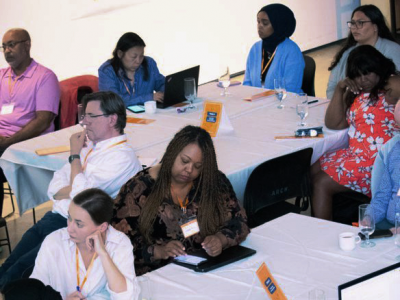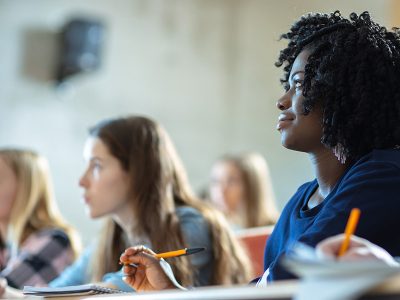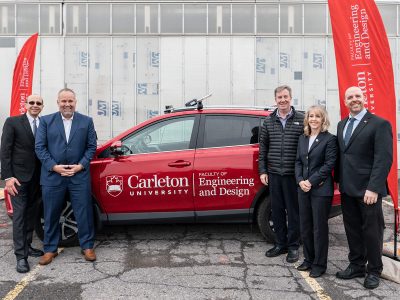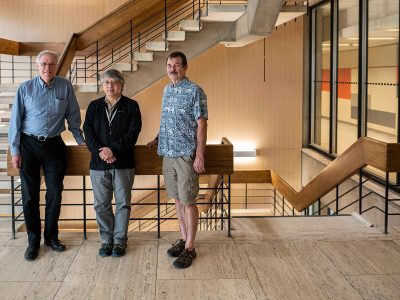By Gabriel Wainer
As predicted, we are in the middle of second wave of COVID-19. As of Dec. 23, the world has seen over 78 million confirmed cases and 1.7 million deaths.
One of the few successes to emerge has been the creation of COVID-19 vaccines in record time. But vaccination will not provide immediate relief.
There are many unanswered questions about the efficacy of the vaccines. For instance, vaccine studies mostly tracked how many of the individuals that were vaccinated became sick. It is not known if the vaccinated individuals can still carry the virus asymptomatically; vaccinated people don’t show symptoms, but some may continue to have virus in the nose and throat that can replicate and spread. We also do not know about the chances of reinfection or long-term immunity.
"The Pfizer/BioNTech vaccine prevents clinical disease but it it still unclear if it prevents asymptomatic infection, or asymptomatic transmission." Anthony Fauci, MD
Complete interview at https://t.co/GT3ET6GzLh#COVID19 #Coronavirus #Fauci #covidvaccine pic.twitter.com/YRKuidhBNb— JAMA (@JAMA_current) December 14, 2020
Infection with COVID-19 comes with a risk of death and puts strain on our health-care system, but there is also a risk of long-term health effects. The bottom line is that we cannot let our guard down: we need to continue wearing masks, keep our physical distance, wash our hands, and avoid crowds and indoor events in poor ventilated areas.
As the vaccine is distributed, we might find ourselves relaxing our guard before it is safe to do so. And as the weather grows increasingly colder, reducing our options for outdoor activities and gatherings, we need to consider how the disease spreads indoors and the importance of ventilation.
Avoiding crowded indoors
The evidence for aerosol transmission is overwhelming. Three of the most important factors that determine the risk of exposure are proximity to people, duration of the exposure and the quality of the air. When the three are combined, the risk is higher, as seen in numerous superspreader events.
COVID-19 spreads through inhalation of the virus. An infected person breathes out aerosols that can remain suspended in the air for up to three hours. Transmission indoors can be around 20 times higher than outdoors.
We have to think about SARS-CoV-2, the virus that causes COVID-19 spreading like cigarette second-hand smoking in a closed space. Imagine being indoors where smoking is permitted: the exhaled smoke can spread in poorly ventilated spaces. The amount of particles inhaled close to the source is higher, but, with time, the smoke will fill the whole room and everybody will breathe the contaminated air.
Indoor transmission by aerosols has been recognized by the U.S. Centers for Disease Control and Prevention and the Public Health Agency of Canada. The World Health Organization recommends avoiding indoor spaces whenever possible and ensuring proper ventilation in the fight against COVID-19.
We need to take these recommendations seriously during the holiday season: we need to reduce the number of close contacts, in particular in indoor settings, wear masks and ventilate the rooms.
Modelling ventilation indoors
At present, my research team is interested in different aspects of indoor ventilation. We are combining building information modelling and indoor viral spread models to study different strategies to return to indoor gatherings and address potential future outbreaks.
One example we used was the site of a COVID-19 outbreak associated with the use of air conditioning in a restaurant in Guangzhou, China. We showed how the airflow produced by the ventilation system affected 10 different individuals. Our team used the floor plans of the restaurant and built a model that can easily be adapted for different factors, such as different positioning of the ventilation sources.
Modelling and simulating indoor ventilation is important: we need to find out which factors — like circulating fresh air or using high-quality air filters — are likely to reduce transmission risk. Simulated virtual environments can be quite informative, as it’s not possible to run experiments with people and COVID-19.
In addition, there is limited information about how infectious SARS-CoV-2 is. Although we know that people shed different amounts of the virus, we don’t know how much virus someone has to inhale to become sick. Using a simulated virtual environment can be useful to conduct different experiments.
The models we constructed allow us to study different scenarios. For instance, we include different types of fabric used for the masks by different individuals as well as the different fitting positions of the masks, which can influence the amount of virus transmitted or inhaled.
The building models can easily adjust different factors for analysis, such as different physical arrangements of people (and their relative physical distance), various ventilation methods, a range of air qualities and even the use of portable HEPA filters to reduce the probability of being infected.
And now that there are vaccines, we’ll need to factor in how the vaccination process will affect disease transmission.
In the meantime, we need to remain vigilant, and focus on the social aspects of the pandemic: online misinformation, social behaviours and public health communication strategies. These are important for all air-transmitted diseases (seasonal flu, colds), including any future pandemics.
This article is republished from The Conversation under a Creative Commons license. Carleton University is a member of this unique digital journalism platform that launched in June 2017 to boost visibility of Canada’s academic faculty and researchers. Interested in writing a piece? Please contact Steven Reid or sign up to become an author.
All photos provided by The Conversation from various sources.
![]()
Wednesday, December 23, 2020 in The Conversation
Share: Twitter, Facebook



